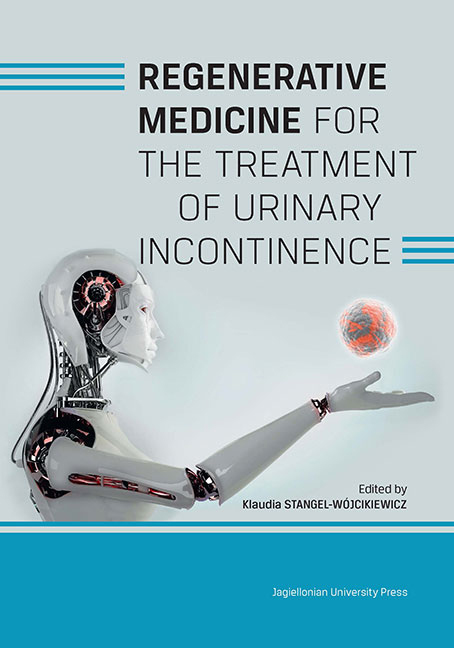Book contents
- Frontmatter
- Contents
- Preface
- Introduction
- Chapter 1 Urinary incontinence in women - outline of the problem
- Chapter 2 Anatomy of the urogenital system
- Chapter 3 Clinical types of urinary incontinence
- Chapter 4 Treatment of stress urinary incontinence
- Chapter 5 Regenerative medicine for the treatment of urinary incontinence
- Chapter 6 Virtual Patient system - simulations of clinical encounters for medical education. Case study of a woman with urinary incontinence
- Chapter 7 Development of a robotic tool aiding a new stem cell-based treatment for stress urinary incontinence in women
- Chapter 8 Difficulties and limitations of cell-based therapy for the treatment of urinary incontinence
- Summary
- List of authors
Preface
Published online by Cambridge University Press: 03 January 2018
- Frontmatter
- Contents
- Preface
- Introduction
- Chapter 1 Urinary incontinence in women - outline of the problem
- Chapter 2 Anatomy of the urogenital system
- Chapter 3 Clinical types of urinary incontinence
- Chapter 4 Treatment of stress urinary incontinence
- Chapter 5 Regenerative medicine for the treatment of urinary incontinence
- Chapter 6 Virtual Patient system - simulations of clinical encounters for medical education. Case study of a woman with urinary incontinence
- Chapter 7 Development of a robotic tool aiding a new stem cell-based treatment for stress urinary incontinence in women
- Chapter 8 Difficulties and limitations of cell-based therapy for the treatment of urinary incontinence
- Summary
- List of authors
Summary
Recent years have seen tremendous progress in biotechnology and the use of stem cells in different fields of medical science, known as regenerative medicine. With good reason, the Nobel Prize in Physiology or Medicine 2012 was jointly awarded to Sir John Gurdon and Shinya Yamanaka. Despite a 40-year gap between their discoveries, both researchers focused on the same element: genes in the cytoplasm of an egg cell that can reprogramme mature cells to become pluripotent. Yamanaka introduced these genes into mature cells and experimentally obtained induced pluripotent stem cells (iPSC cells). The major objective of this book is to present an overview of studies on the use of stem cells for the treatment of urinary incontinence. The ongoing progress that has been observed in this discipline requires constant knowledge update. Reports on subsequent phases of clinical trials investigating the use of mature stem cells imply that this therapy is no longer a futuristic dream but a clinical fact. The trend towards limiting the invasiveness of surgical procedures in urogynecology may prompt the use of alternative therapeutic methods with minimal risk of complications, which is possible with the application of the patient's autologous tissue material.
Understanding the anatomical structures of the lesser pelvis, including the urethra and urethral sphincter, is important to comprehend the idea of restoring their normal functions using stem cells. In addition, this book provides information on state-of-the art teaching methods to develop clinical skills such as making diagnoses and therapeutic decisions (for students, doctors, biotechnologists) offered by e-learning and a virtual patient model accessible anytime and anywhere. This teaching tool, still underestimated and unpopular in many countries, can become a standard element of medical education. Work on the new therapeutic procedure would not be possible without the involvement of a multidisciplinary team of scientists, including engineers, who aim at developing a method for the precise administration of stem cell suspension into the target site specified by a doctor.
- Type
- Chapter
- Information
- Publisher: Jagiellonian University PressPrint publication year: 2016



